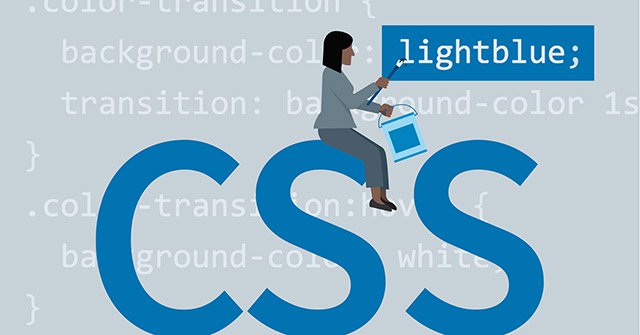Align - Align in CSS
Align is the setting of the element's element or content element. There are many properties in CSS that allow aligning an element like margin, padding, text-align, position, float . Align helps you a lot in formatting text and images.
In this article, TipsMake.com will work with you to find some of the most commonly used aligns. Invites you to read the track.
Center for element - Use margin: auto
In CSS, to center a block element
We use the margin attribute with the value of auto to align the element in the middle compared to its parent element.
The element after occupying a certain space, the remaining space will be divided equally for the two sides:
.center {
margin: auto;
width: 50%;
border: 3px solid green;
padding: 10px;
} Center the element
To center horizontally for a block element (like div) you can use
use margin: auto.
Note: The element after occupying certain space, the space left
will be divided equally for both sides.
Center the image
To center an image, set margin-left and margin-right to auto and make the image become a block- like element as mentioned above.
img {
display: block;
margin-left: auto;
margin-right: auto;
width: 40%;
} Center the image
To center an image, set margin-left and margin-right to auto and do
for the image to become a block element as mentioned above.
Align text horizontally - Use text-align
In CSS there is a text-align attribute that allows you to align content text to the left, middle, or right of the element by values:
- text-align: center - center
- text-align: left - left root
- text-align: right - right-aligned
Note : The text-align attribute also applies only to block elements because inline only occupies a sufficient width of its content.
Align left / right - Use position
Another method to align elements is to use position: absolute.
.right {
position: absolute;
right: 0px;
width: 300px;
border: 3px solid purple;
padding: 10px;
} Align left / right - Use float
The float attribute is also used to align elements.
.right {
float: right;
width: 300px;
border: 3px solid purple;
padding: 10px;
}
Note : If a floating element is higher than the parent element, it will cause an outflow of content. To fix this, we use clearfix overflow: auto:
.clearfix {
overflow: auto;
}
Centered vertically - Use padding
There are many ways to center a vertical element in CSS. The simplest solution is to use padding.
.center {
padding: 70px 0;
border: 3px solid green;
To align both horizontally and vertically, use padding with the attribute text-align: center.
.center {
padding: 70px 0;
border: 3px solid green;
text-align: center;
} Centered vertically - Use line-height
You also have another way to center vertically by using the line-height attribute with the same value as the height attribute .
.center {
line-height: 200px;
height: 200px;
border: 3px solid green;
text-align: center;
}
.center p {
line-height: 1.5;
display: inline-block;
vertical-align: middle;
}
Center vertically - Use position and transform
If you don't use the above padding and line-height , you can use the third way to use position and transform:
.center {
height: 200px;
position: relative;
border: 3px solid purple;
}
.center p {
margin: 0;
position: absolute;
top: 50%;
left: 50%;
transform: translate(-50%, -50%);
} You should read it
- Complete Word 2016 tutorial (Part 20): Align, align, and group objects
- Guidelines alignment in Word
- How to Align an HP Printer
- Instructions align the margins in Gmail
- How to fix the error is not aligned on Word
- How to align beautiful Word documents
- How to align correctly in Word to print beautifully in Word
- Instructions on how to align margins in Word
May be interested
- Combinator in CSS
 combinator represents the relationship between selectors, allowing combining selectors together as strings.
combinator represents the relationship between selectors, allowing combining selectors together as strings. - Pseudo-Class in CSS
 pseudo-class in css is used to add special effects to some selector.
pseudo-class in css is used to add special effects to some selector. - Pseudo-Element in CSS
 pseudo-element in css is used to add special formats to a selector
pseudo-element in css is used to add special formats to a selector - Opacity / Transparency property in CSS
 the opacity attribute determines the opacity and transparency of an element.
the opacity attribute determines the opacity and transparency of an element. - Navigation Bar - Navigation Bar in CSS
 navigation bar - navigation bar, or menu bar, is used to navigate the main sections of a website
navigation bar - navigation bar, or menu bar, is used to navigate the main sections of a website - Use Dropdown in CSS
 the dropdown effect is mainly used with navigation menus as an indispensable solution in website design, especially websites with a large number of indexes, cannot be arranged entirely on the interface.
the dropdown effect is mainly used with navigation menus as an indispensable solution in website design, especially websites with a large number of indexes, cannot be arranged entirely on the interface.






 How to align text in a cell in Excel
How to align text in a cell in Excel How to align in Word - Instructions on how to align in Word 2007, 2010, 2013, 2016
How to align in Word - Instructions on how to align in Word 2007, 2010, 2013, 2016 Complete Word 2016 tutorial (Part 20): Align, align, and group objects
Complete Word 2016 tutorial (Part 20): Align, align, and group objects How to Align an HP Printer
How to Align an HP Printer How to align beautiful Word documents
How to align beautiful Word documents